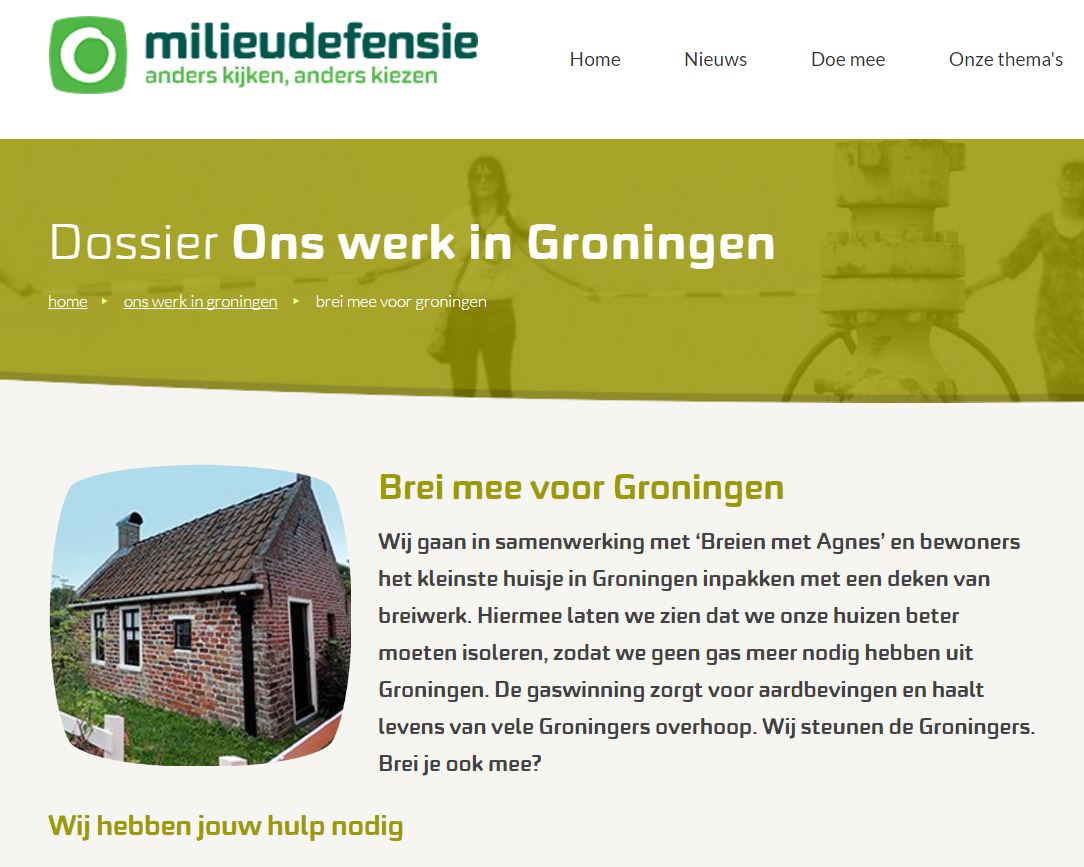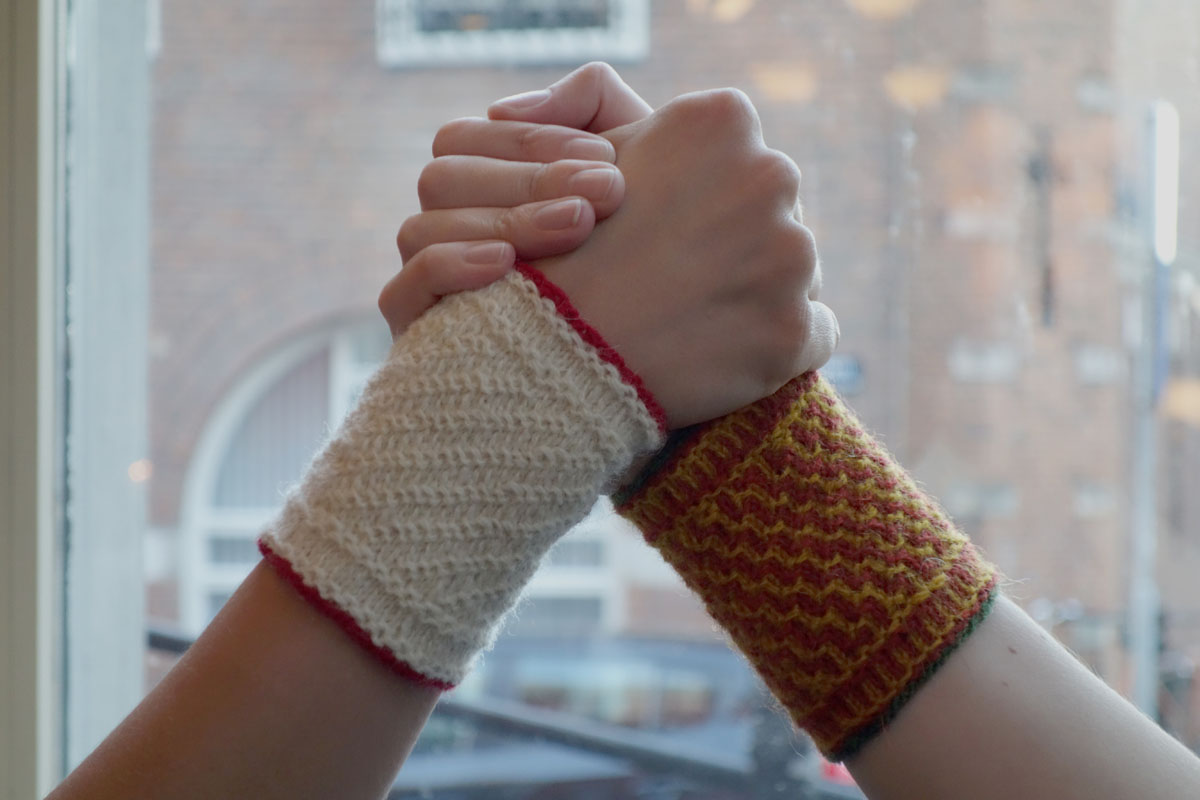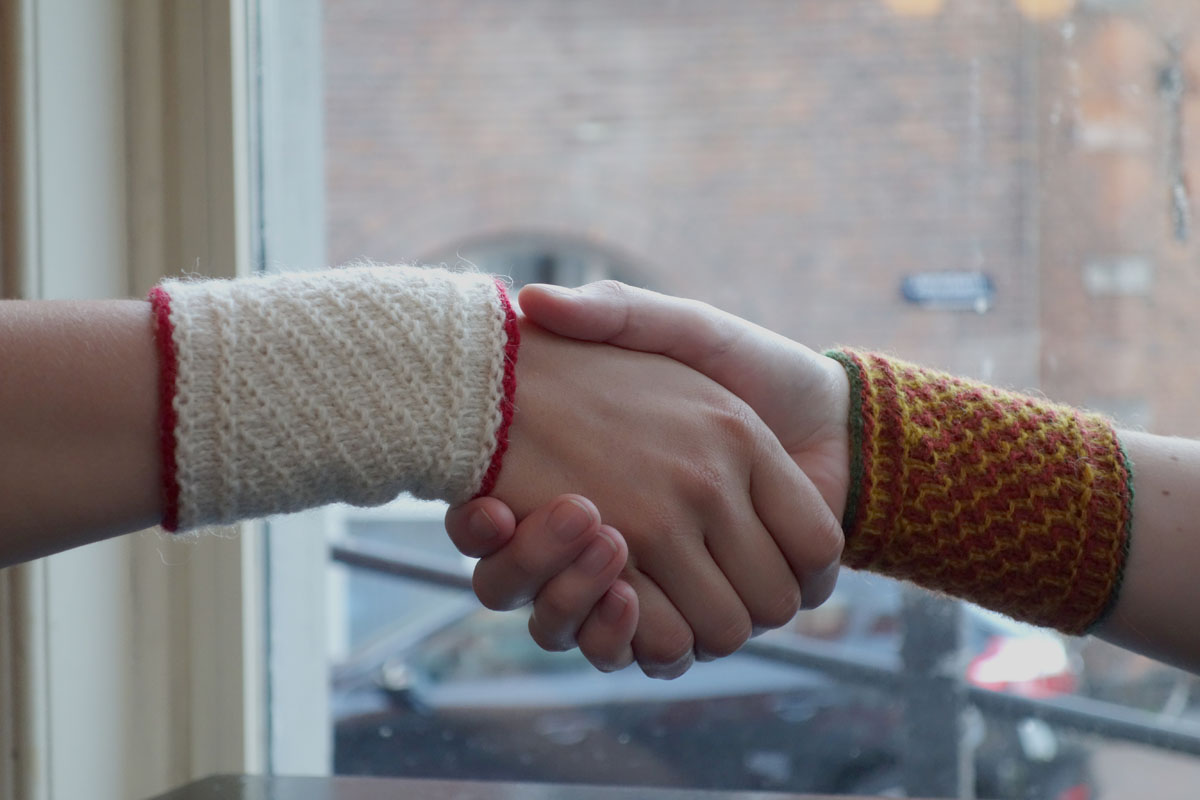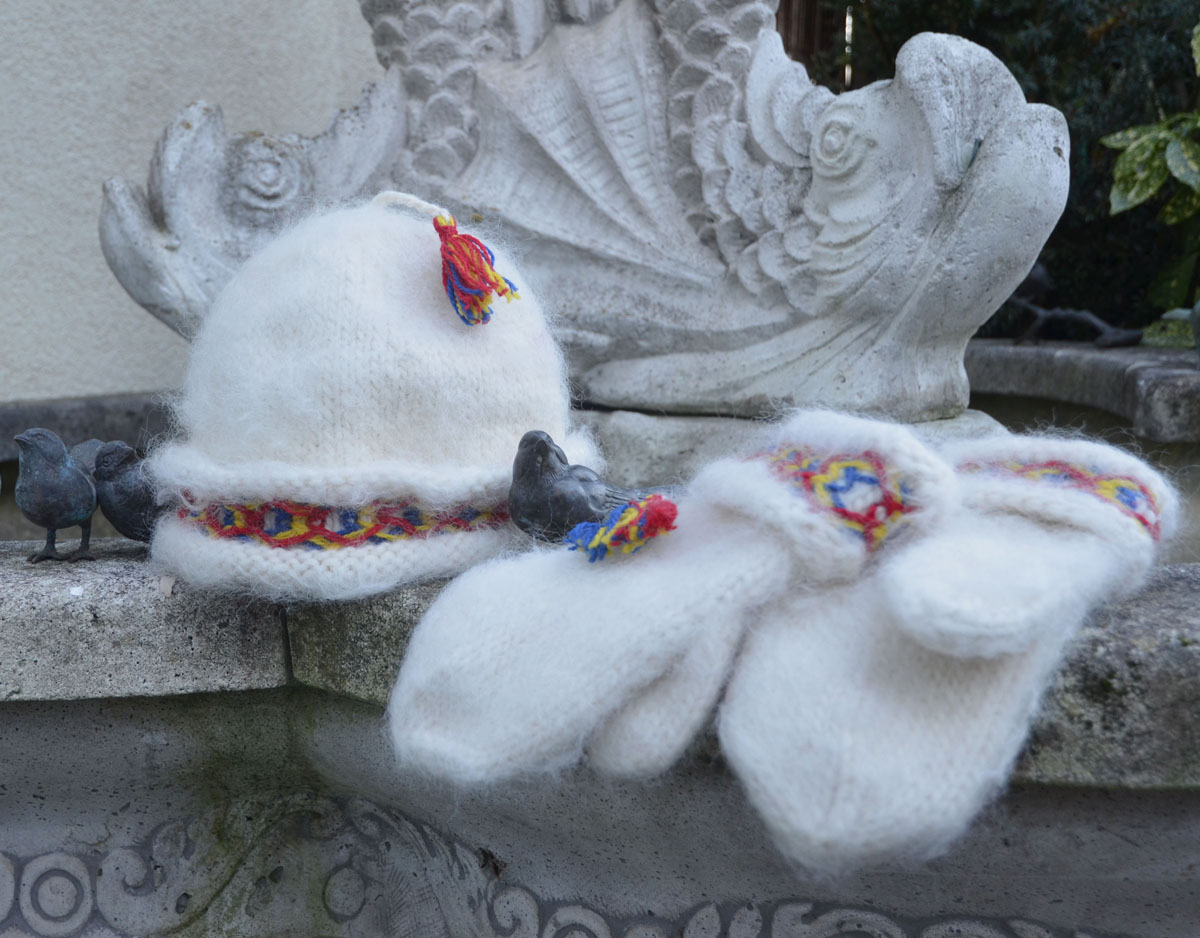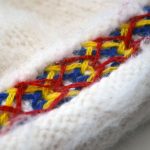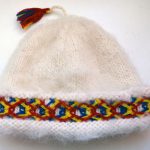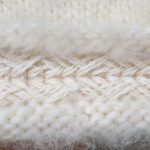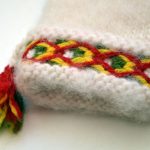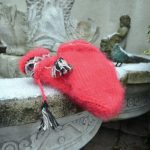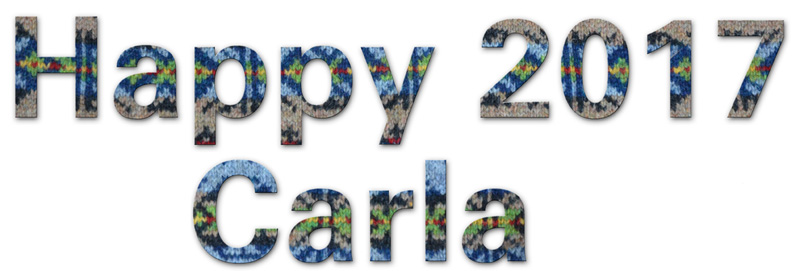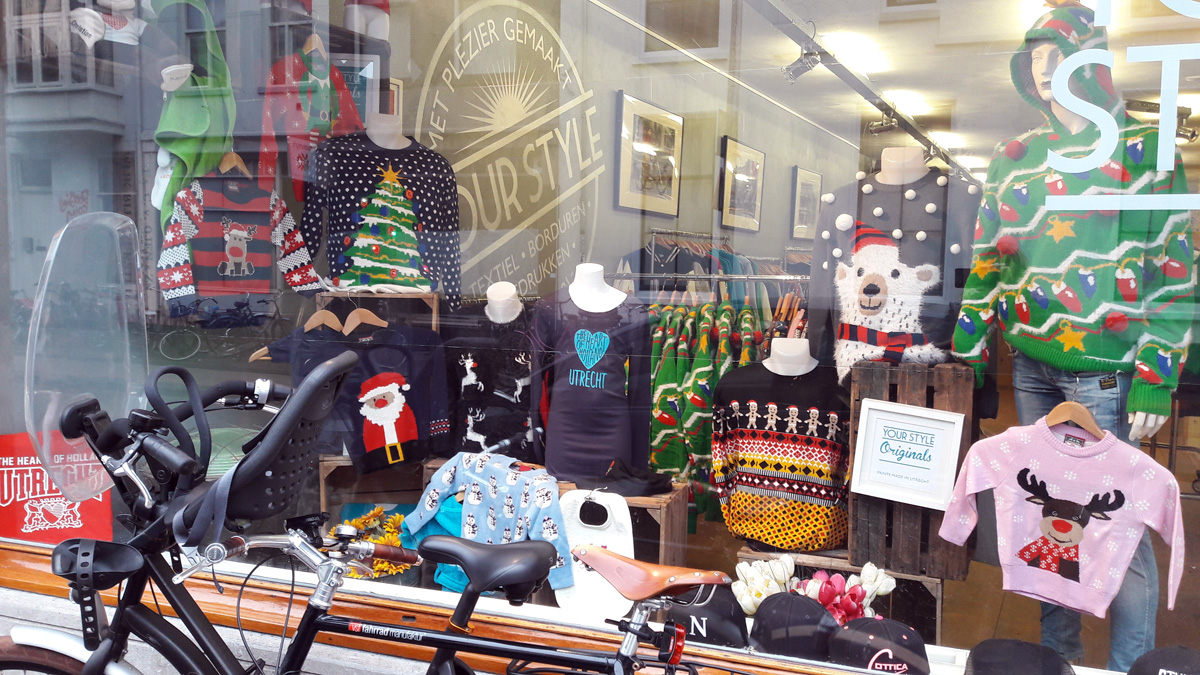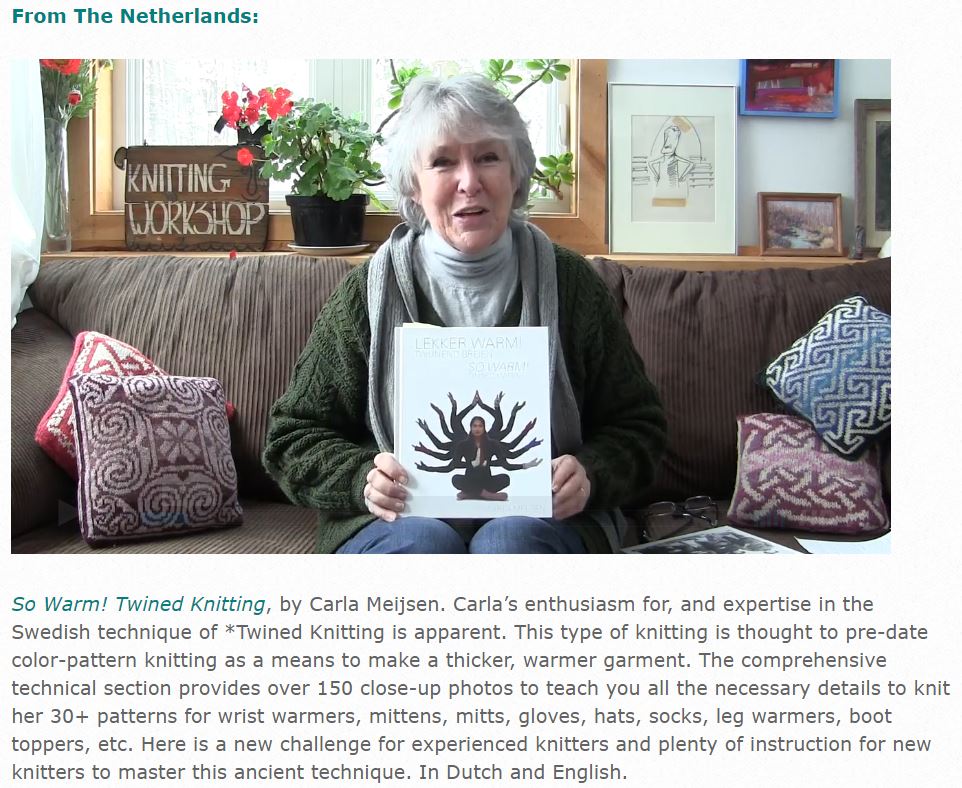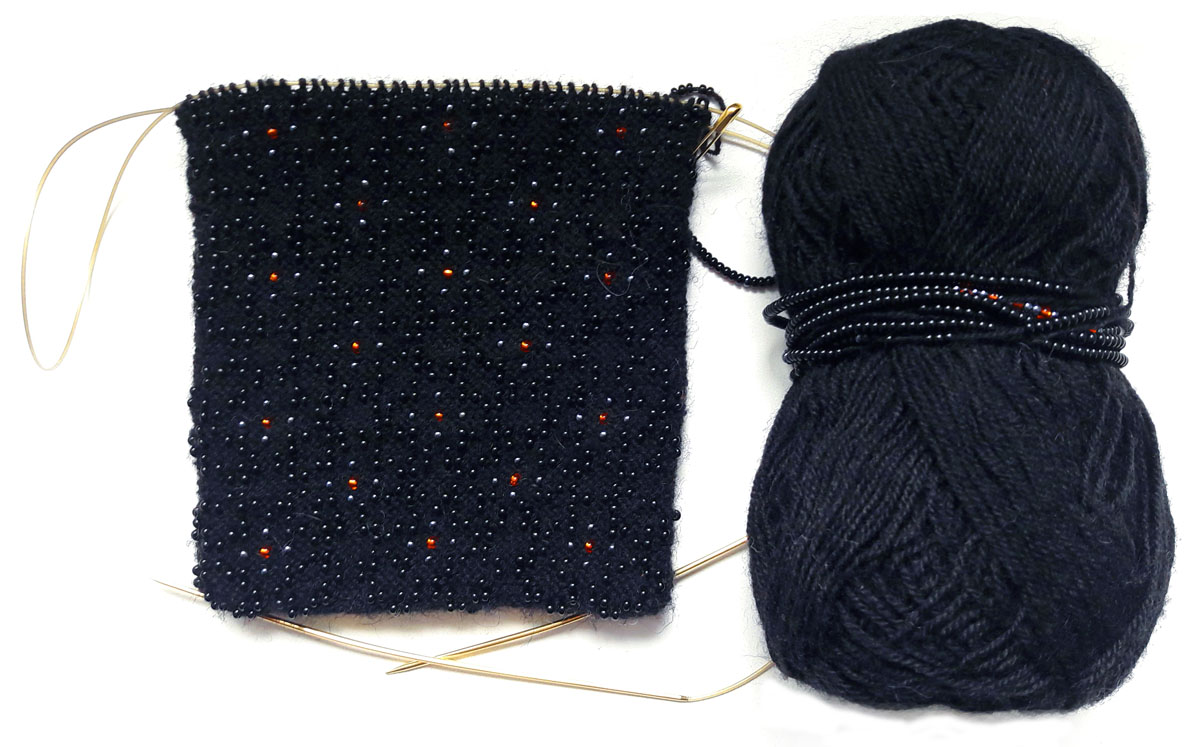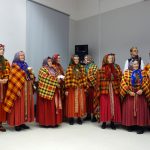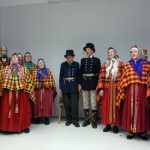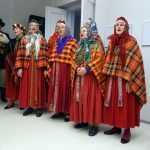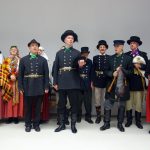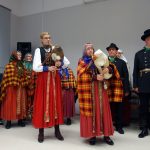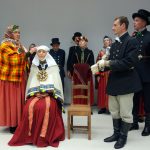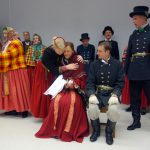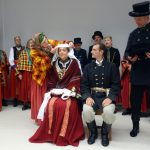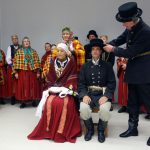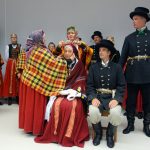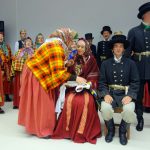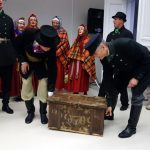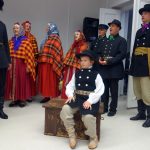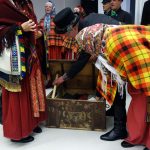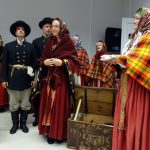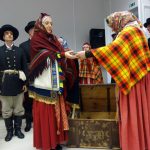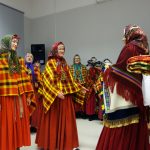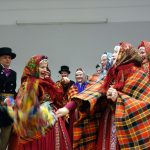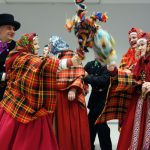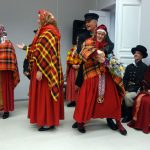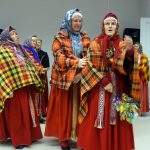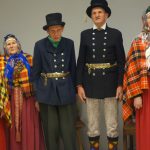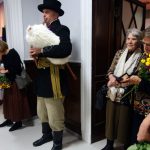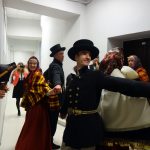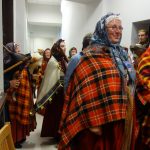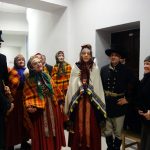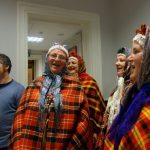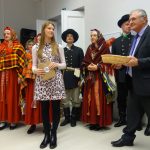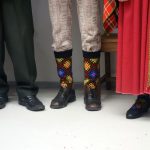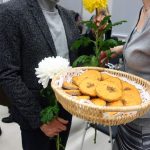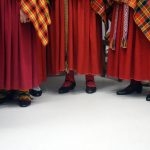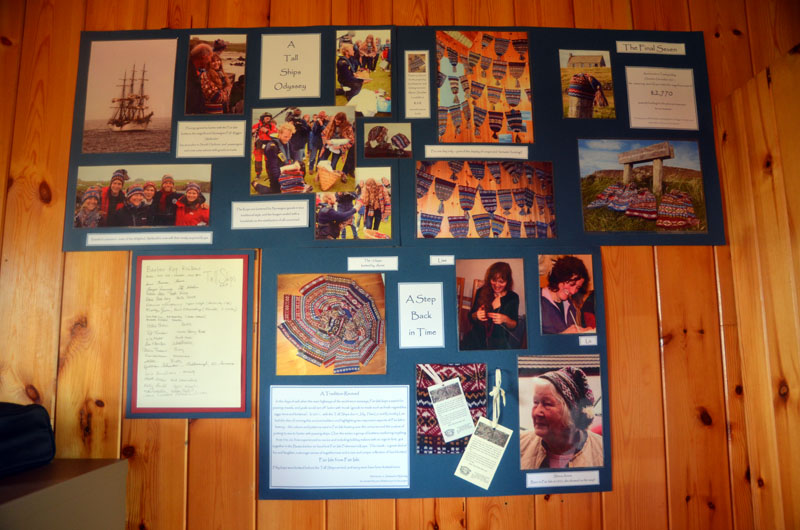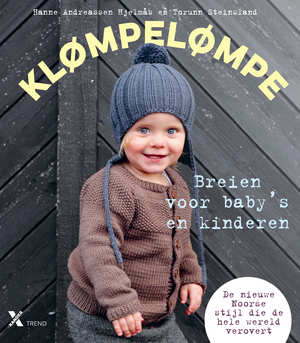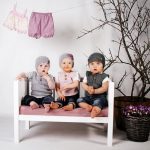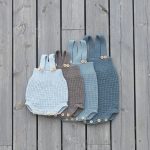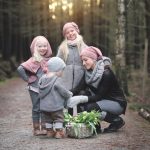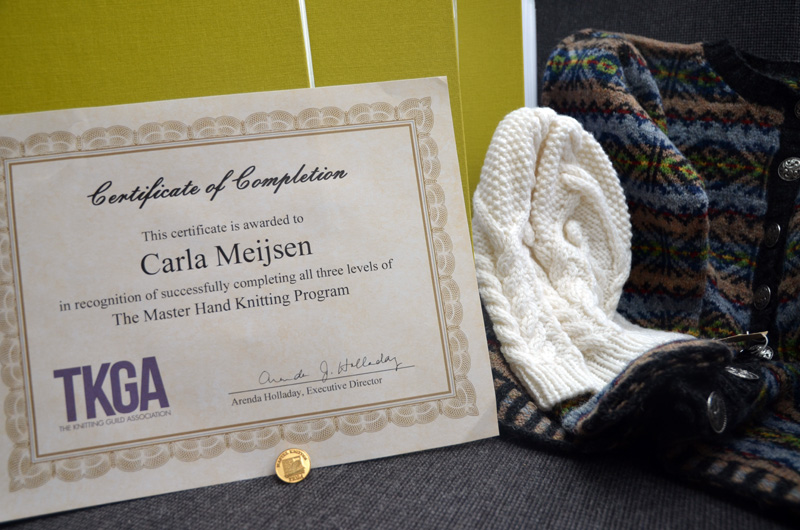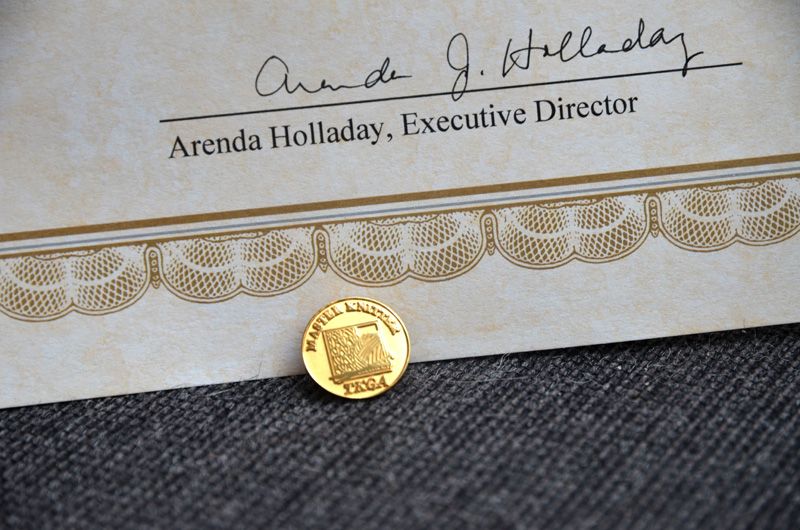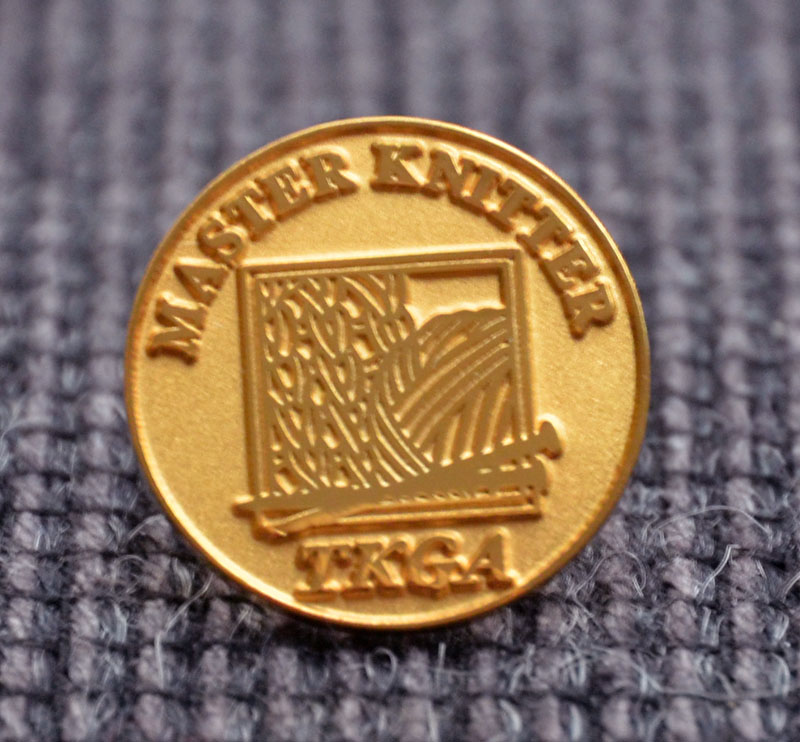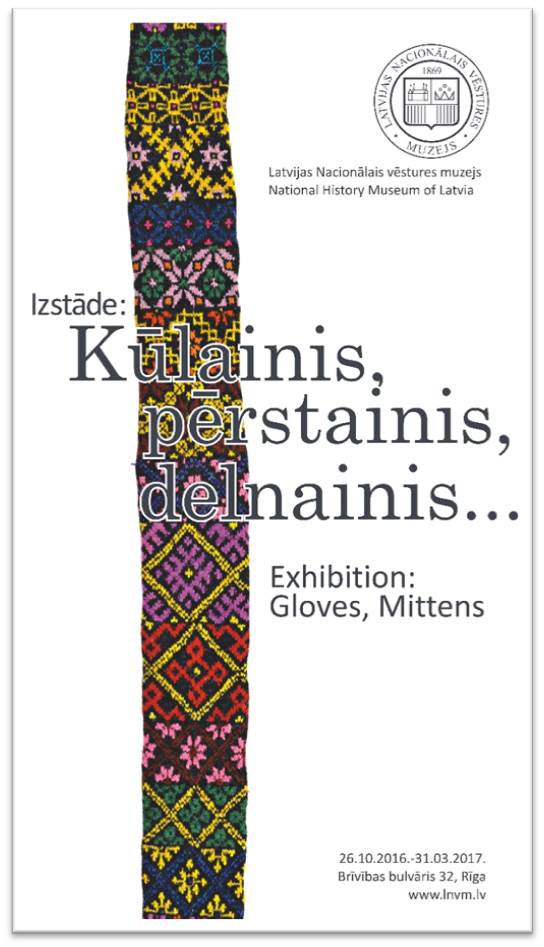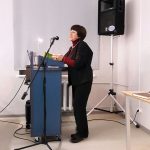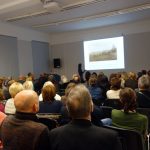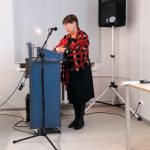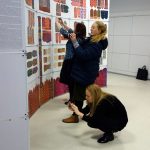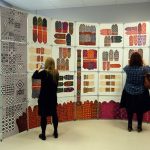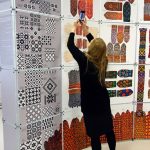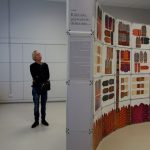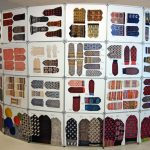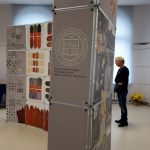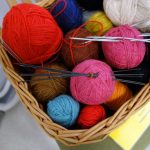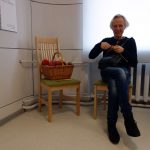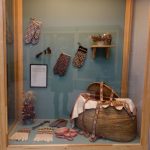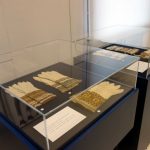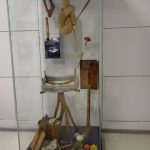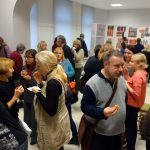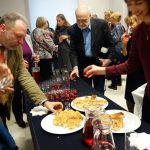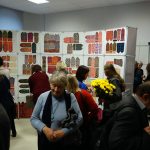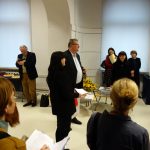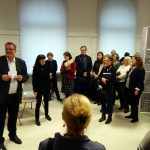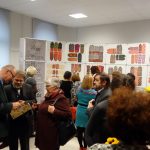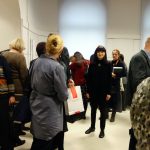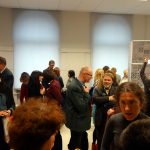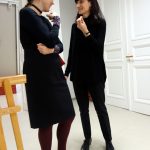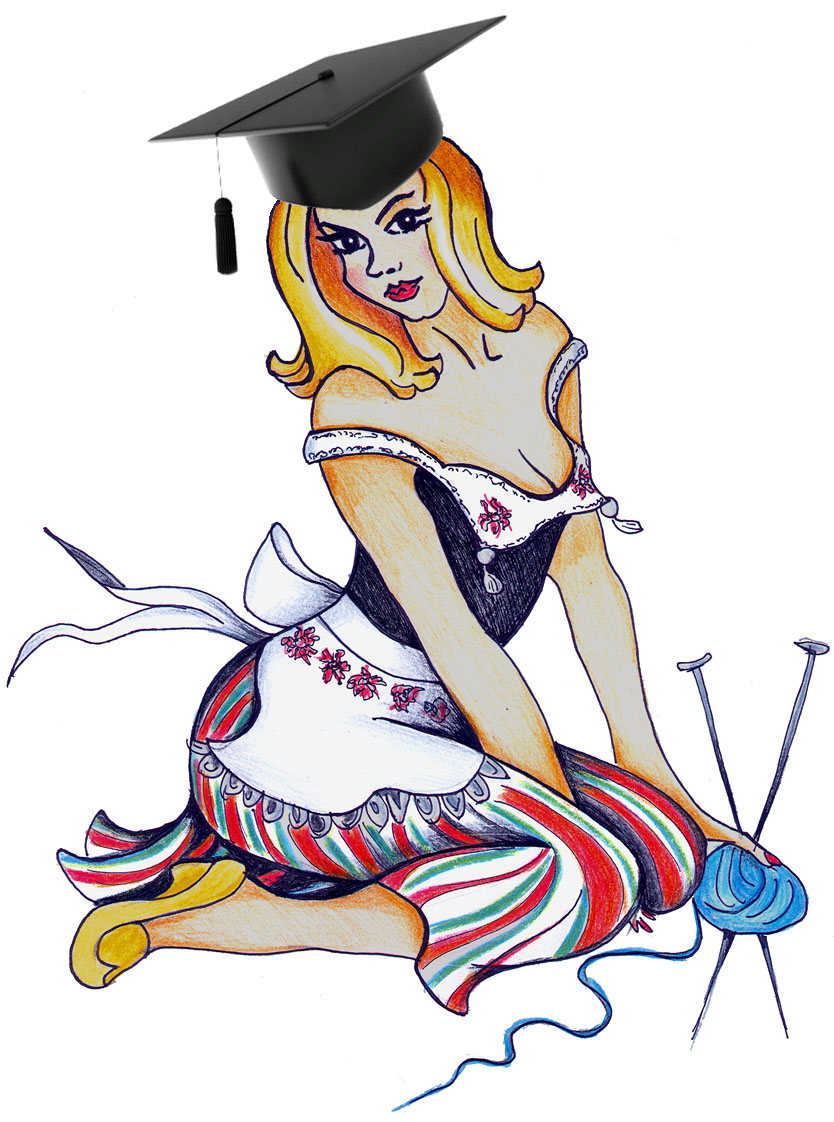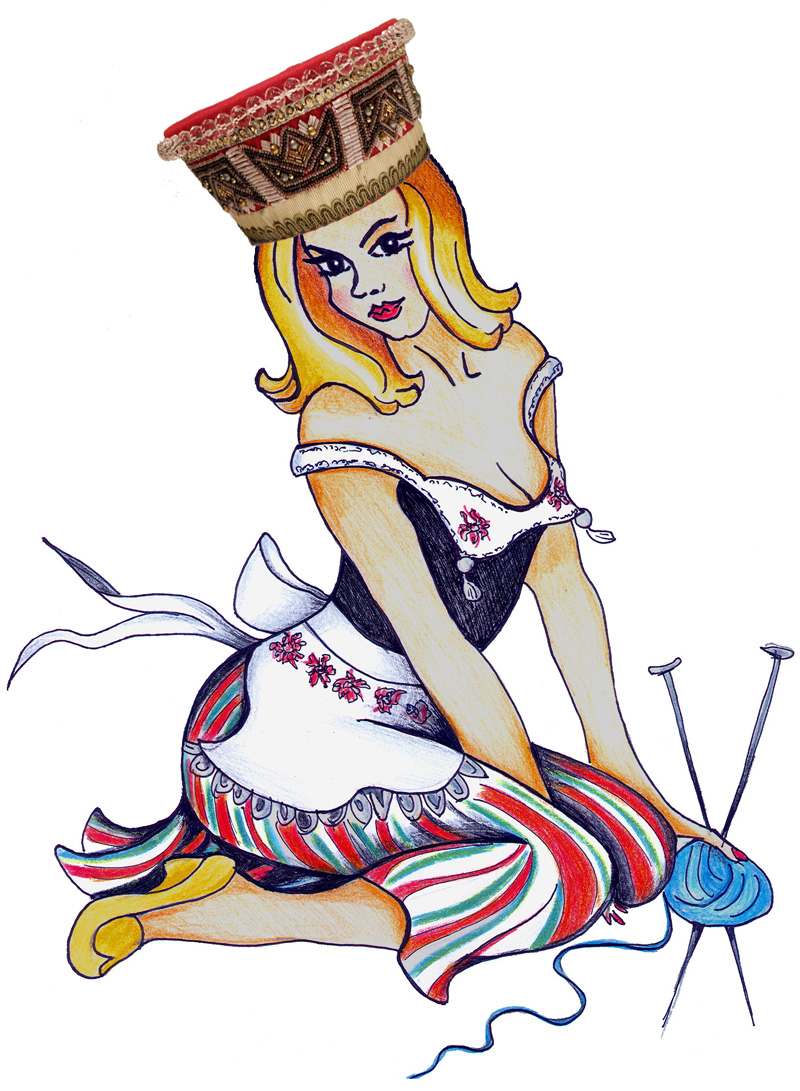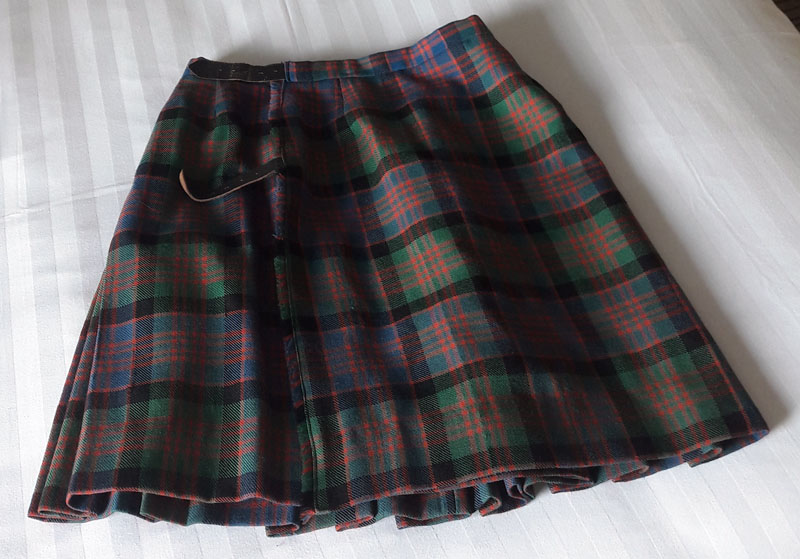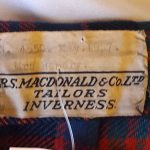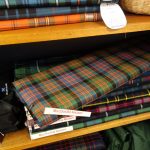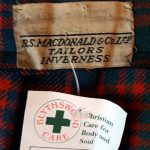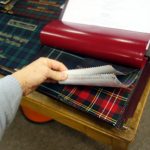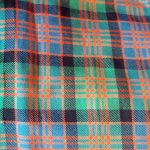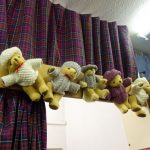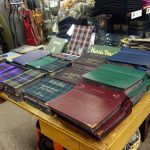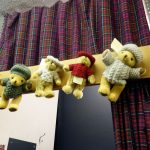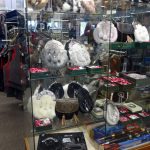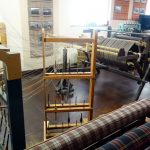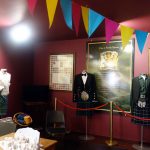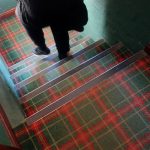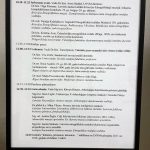 |
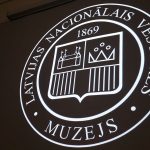 |
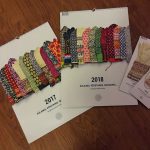 |
| Klik op afbeelding voor vergroting – Click to enlarge images |
Het was wat vervreemdend om opeens op de eerste rij te zitten bij een conferentie van het National Historical Museum of Latvia in Riga. Stel je voor, een grote zaal vol met alleen maar Letten,… en ik. Vertaling zat er dus niet in, maar toch is het leuk om te zien hoe alles gaat en de sfeer te proeven, de afbeeldingen op het scherm mee te kijken en in de pauzes mensen te ontmoeten. De conferentie duurde twee dagen, dus ik ben af en toe lekker de stad en zo in gegaan ter afwisseling. Maar met de opening van de wantententoonstelling en de tentoonstelling ‘The Latvians: An Interpretation. Latvian Ethnographic Exhibition of 1896’ en het optreden van de zangers uit Alsunga was ik er natuurlijk bij.
It was somewhat alienating to suddenly sit in the front row at a conference of the National Historical Museum in Lativa in Riga. Image, a large hall filled with nothing but Latvians … and me. Translation therefore was of course not an option, but it was fun to see how things were done and to soak up the atmosphere, watching the images on the screen and to meet people during the breaks. The conference lasted for two days, so now and then I took a break in the old city for a change. But with the opening of the mitten exhibition and the exhibition ‘The Latvians: An Interpretation. Latvian Ethnographic Exhibition of 1896″ and the performance of the singers from Alsunga I was of course there.
In 2015 leerden Mieke, Andrea en ik de museummedewerkers Ilze Mikelsone en Inita Heinola kennen toen we in het depot van dit museum stapels prachtige wanten en handschoenen bestudeerden. Ilze , die ervoor heeft gezorgd dat ik bij de conferentie kon zijn, had prachtige polswarmers aan, die haar petit robe noir een mooi accent gaven. Inita, de curator van de wantententoonstelling, had een prachtig overzicht van wanten en handschoenen uit allerlei gebieden in Letland samengesteld. Beiden zijn gedreven mensen die met hart en ziel werken om de collecties uit te breiden, de fragiele textiele objecten te conserveren en te tonen aan het publiek. Omdat dit mijn vierde keer in Letland was, krijg ik meer inzicht in welke motieven, kleuren en patronen uit welke gebieden komen. Ik ga steeds meer overeenkomsten en verschillen zien, ook als ik het Letse breiwerk vergelijk met bijvoorbeeld dat uit Estland.
In 2015 Mieke, Andrea and I met the museum employees Ilze Mikelsone and Inita Heinola when we researched piles of beautiful mittens and gloves at the depot museum. Ilze, who made it possible for me to attend the conference, wore beautiful wrist warmers, which gave her petit robe noir a beautiful accent. Inita, curator of the mitten exhibition, composed a wonderful overview of mittens and gloves from all regions in Latvia. Both are passionate people who work with heart and soul to expand the collections, preserve the fragiles textile items and display it for the public. Because this was my fourth time in Latvia, I’m learning to better understand what motifs, colors and patterns come from which regions. I see more and more similarities and differences, also when compared with Latvian knitwear for example, that in Estonia.
De tentoonstelling bestaat uit een dubbelzijdige zuil met aan beide kanten foto’s van oude wanten en informatie. In de vitrines zijn de echte oude wanten en handschoenen tentoongesteld. Je kan er met je neus op om de details te bestuderen. Met Jan ben ik de er nog terug geweest om in alle rust nog even een blik te werpen zonder alle mensen die er waren tijdens de opening. Het breiwerk wordt iedere maand gewisseld voor een andere selectie, zodat er al met al voor de fanatieke liefhebbers een groot deel van de collectie te bewonderen is als ze een paar keer terug komen. Ook in de permanente collectie zijn enkele prachtige stukken opgenomen.
The exhibition consists of a double-sided folding stand with on both sides pictures of old mittens and information. In the showcases real old mittens and gloves are exhibited. You can look at them closely and study the details. With Jan I have been back for a moment to look at them again without the crowds of people who were at the opening. The knitwear is changed every month for another selection, so the avid enthusiasts can come more as once and admire a large part of the collection. Also, some beautiful pieces included in the permanent collection.
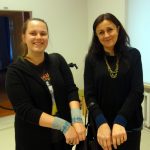 |
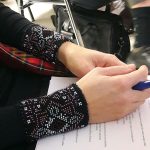 |
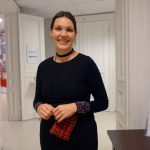 |
| Klik op afbeelding voor vergroting – Click to enlarge images |
De wantententoonstelling was extra feestelijk vanwege het uitkomen van kalenders met wanten en handschoenen uit het hele land. Er is voor zowel 2017 en 2018 zowel een grote als een kleine kalender samengesteld. Ik nam ze natuurlijk allemaal mee, prachtige souveniers. De opening werd geopend door de directeur van het museum, waarbij Inita en vele andere medewerkers in het zonnetje werden gezet. Ook Linda Rubena en haar dochter Darta waren erbij, beiden met prachtige door Linda gebreide polswarmers. De eerste conferentiedag was een bijzondere en geweldig leuke ervaring. Moe en voldaan en een bezoekje aan het Lido voor een pompoensoepje en een Lets pannenkoekje ging ik terug naar mijn appartement in de Lāčplēsis Iela.
Dank aan Inita en Ilze en alle andere medewerkers van het National Historical Museum voor de uitnodiging om hier bij te mogen zijn! Ilze, het waren heerlijke bonbonnetjes!
The opening of the exhibition was extra special because of the publication of calendars with mittens and gloves from across the country. For both 2017 and 2018 a large and a small calendar is made. I have them all, of course, wonderful souvenirs. The exhibition was opened by the director of the museum, where Inita and many other employees were put in the limelight. Linda Rubena and her daughter Darta were there, both with beautiful wrist warmers knitted by Linda. The first day of the conference was a special and great fun experience. Tired but satisfied, and after a visit to the Lido for a pumpkin soup and a Latvian pancake I went back to my apartment in the Lāčplēsis Iela.
Thanks to Inita and Ilze and all other employees of the National Historical Museum for the invitation be in there! Ilze, the bonbons were delicious!

